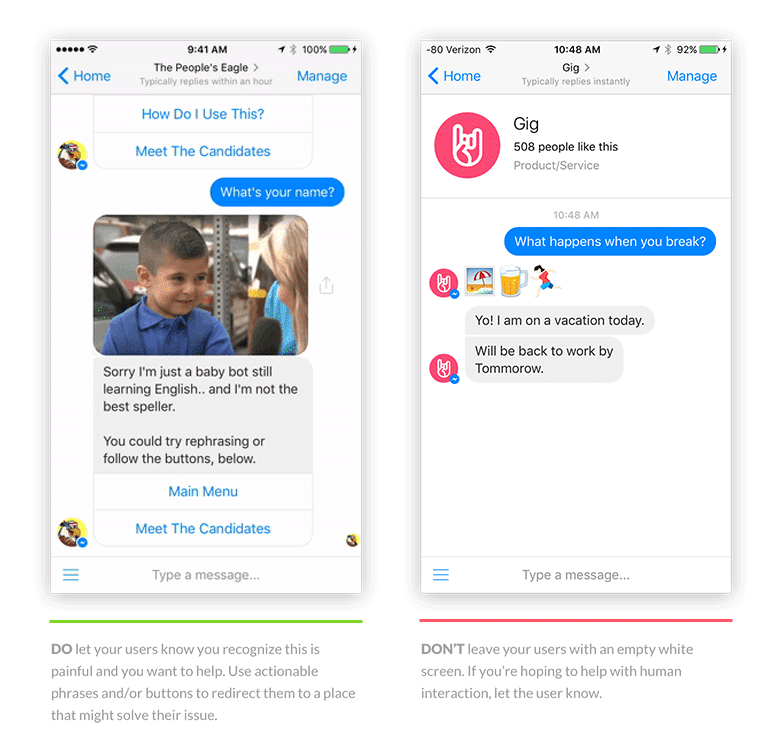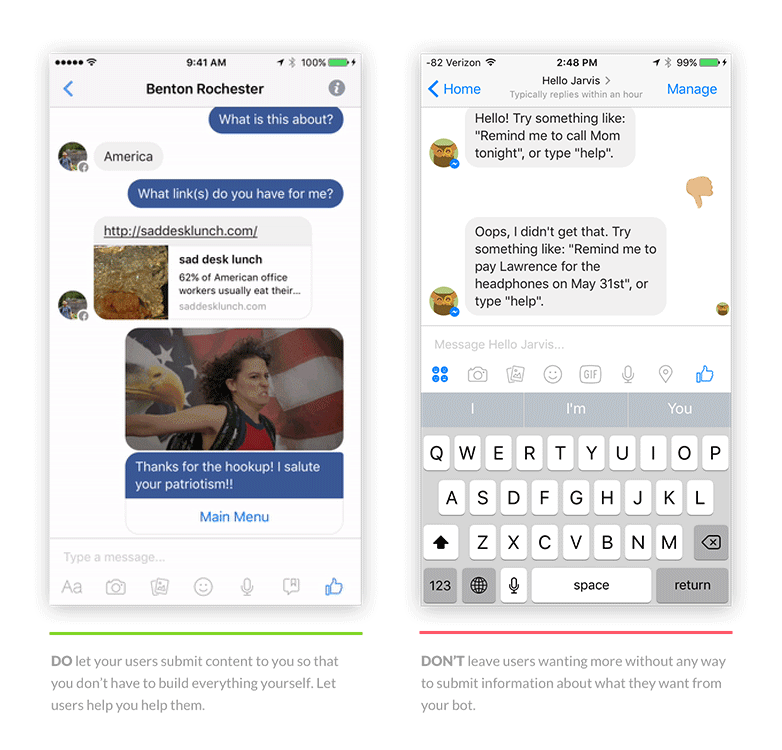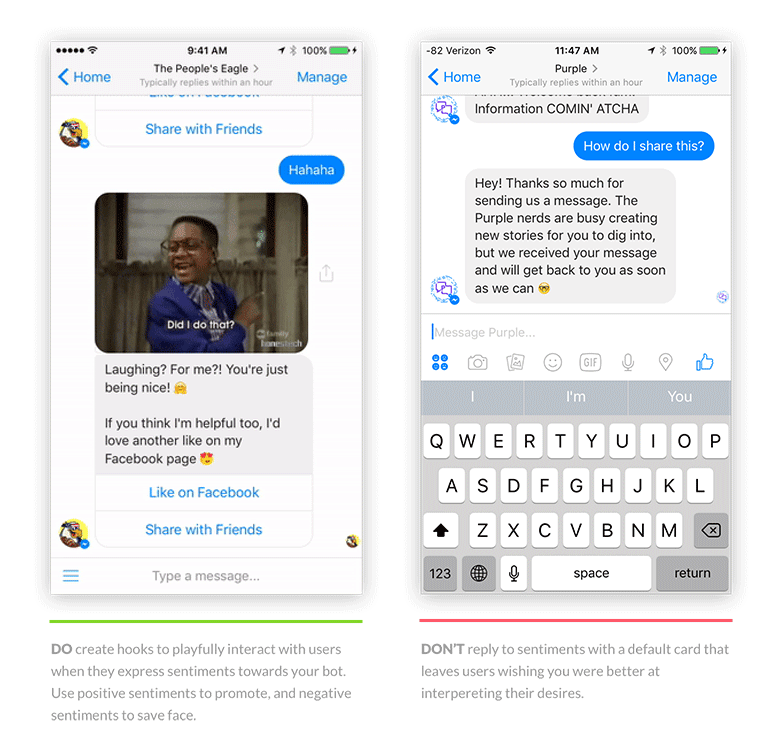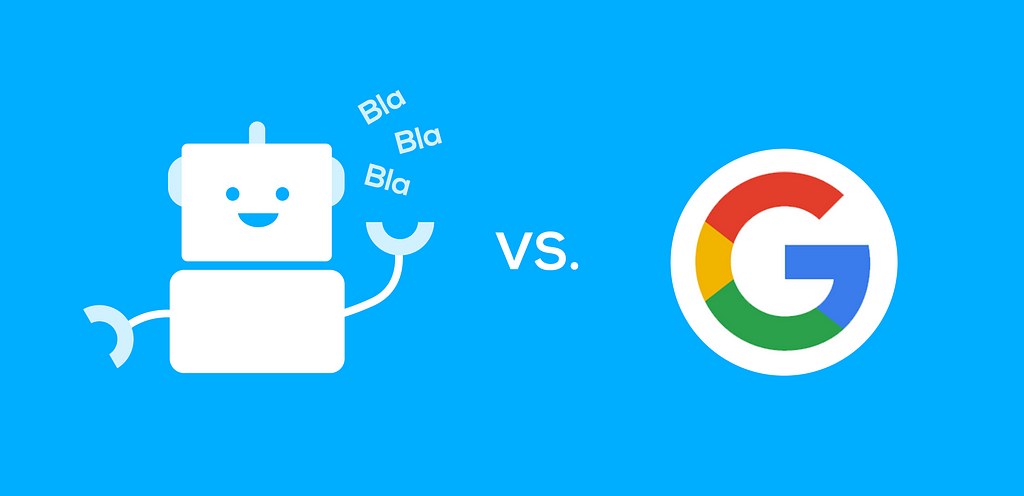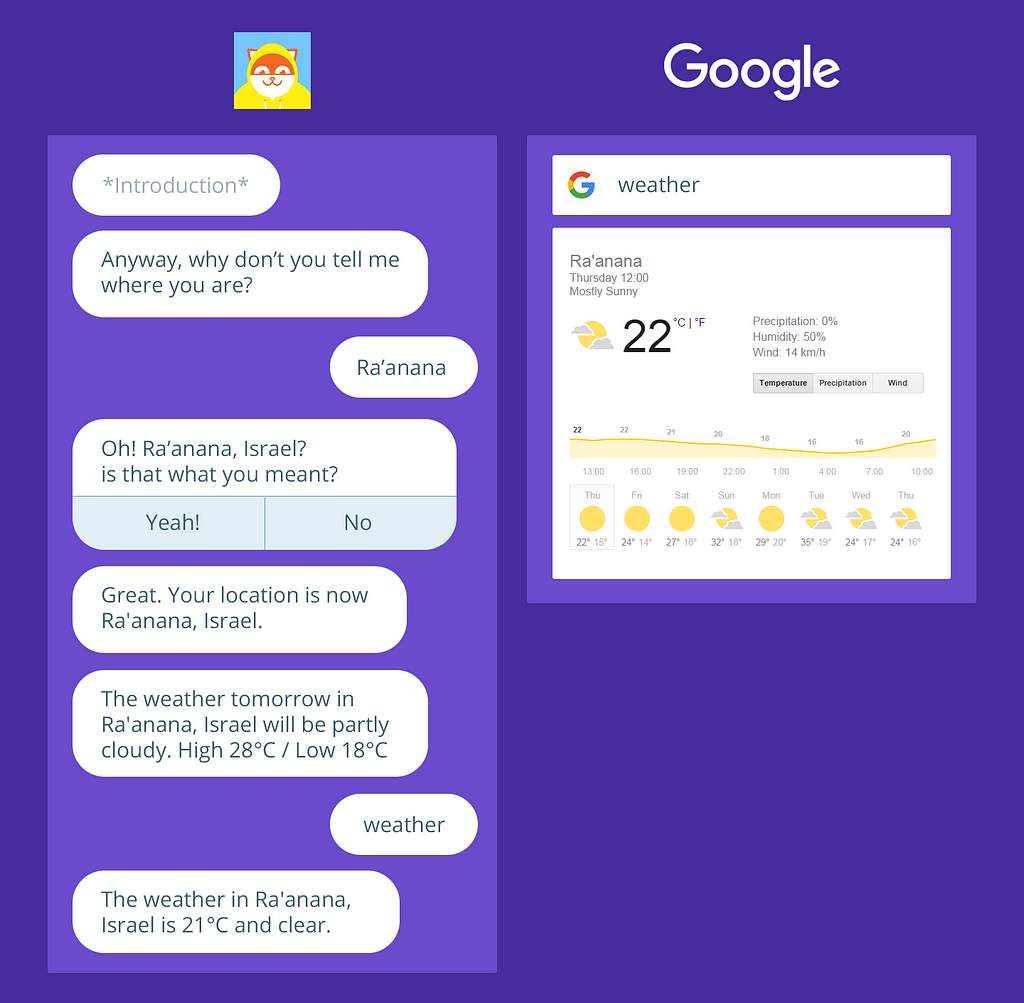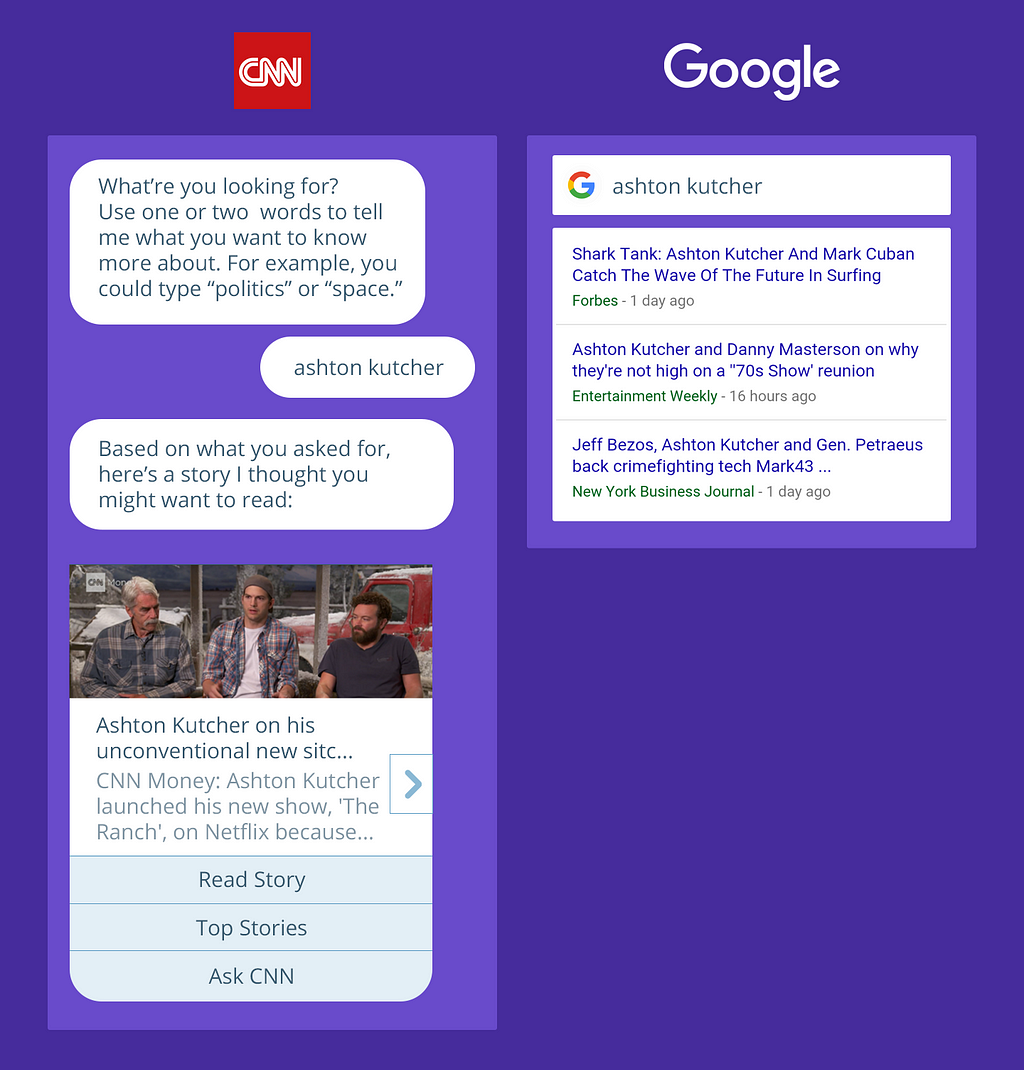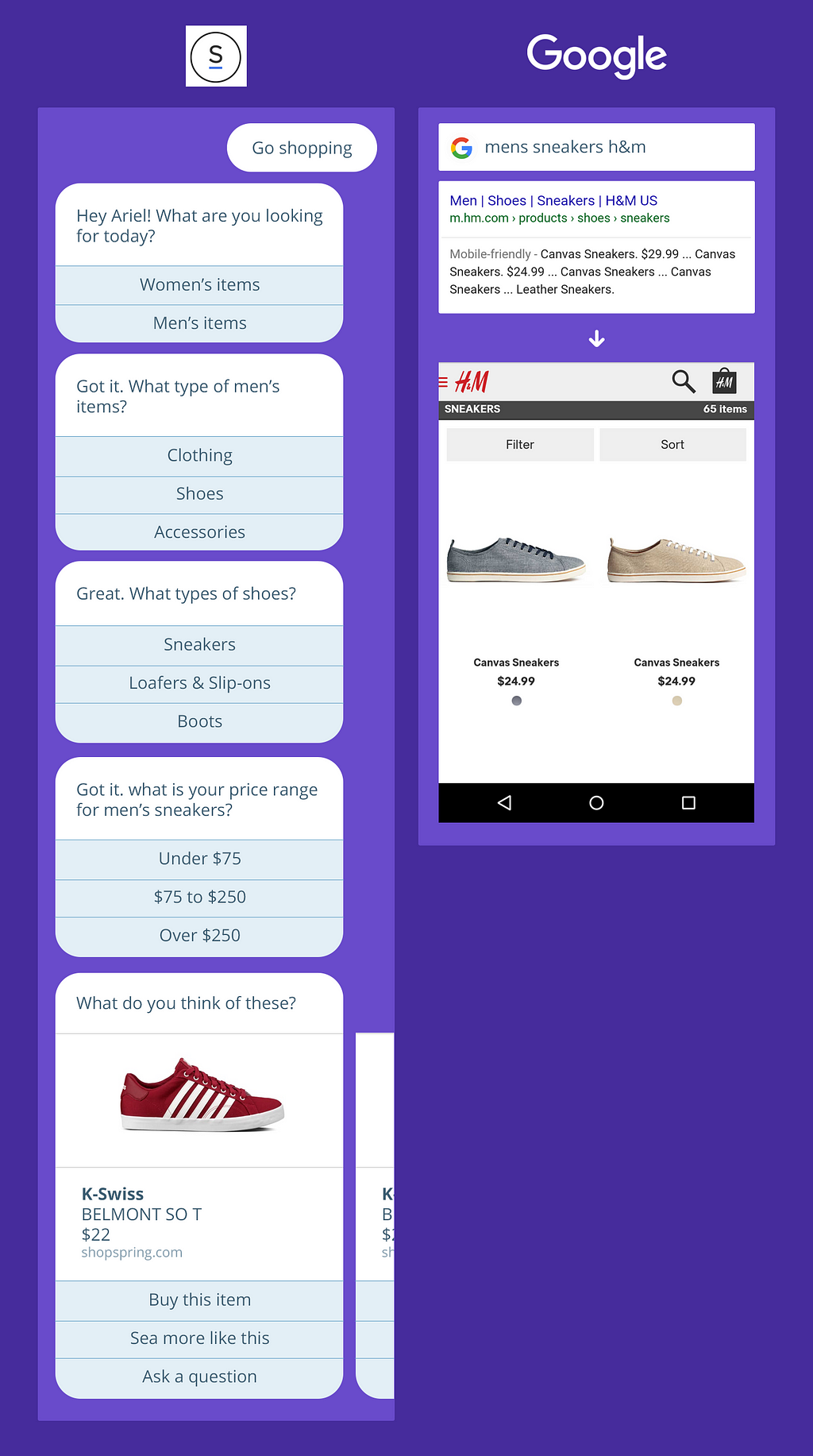
I’ve been reading about chatbots since the beginning of the year and have been building for the past several months. In that time I’ve built, or helped build, 5 bots and have connected with other teams building around the world to trade insights.
I’ve also been blessed to be surrounded by the world class talent that builds for R/GA, along with the incredible minds at Google. There’s no doubt the group of creators I’m surrounded with every day has helped immensely.
But no matter how many smart people I talk to or how much reading I do, there’s nothing that can supplement building, testing, failing, and iterating until the problem is solved.
I hope this series will help accelerate your process, but at the end of the day I really hope it helps you get to building. And if you have questions, please feel free to reach out!
The Power of Chatbots
The incredible potential of chatbots lies in the ability to individually and contextually communicate one-to-many.
That’s a loaded sentence. What does it mean? Let’s break it down.
One-to-Many Communication
There are plenty of tools out there that allow us to communicate one-to-many at this point in history. These tools, including everything from basic mailers to email marketing to social media platforms, make it easy to reach a large audience and target groups all at the same. But, for the most part, these tools do not allow us to communicate with people on an individual level.
Many of these tools have become ubiquitous to the point that they’ve become white noise in our life. They’re embedded with what most people will tell you are ‘spammy’ marketing messages. They don’t often bring meaningful value anymore and usually frustrate people more than anything. We don’t really interact with these messages, we generally trash them.
One-to-many communication tools are still an option, but they’re becoming obsolete more and more every day.
Individual Communication
Reaching mass amounts of people at the individual level is something that hasn’t been around for very long. The most popular way to do so right now is through cookies or programmatic advertising but, ultimately, reaching the individual in a meaningful way takes a lot of work and analytic knowhow if you want to do it right.
The benefit of individual communication tools is that the value of the message is much greater. The message people receive isn’t a blanket message put to blast out to millions of people, regardless of who they are. The message is more specific and, while it may still end up reaching millions, it feels much more like the message was made for the recipient.
The downfall of these tools is that they typically come in the form of a banner ad or email that was sent based on a site the user had visited or an item the user had recently viewed/purchased. This sounds great to a business, but it sounds (and feels) creepy to the person receiving the message.
Contextual Communication
We do this every day when we talk to someone. It’s unconscious behavior for most people.
When someone asks you “Should I bring a jacket?” you don’t ask them what day they were thinking about bringing a jacket, you just know that they’re asking if they should bring a jacket right now. You unconsciously (or maybe consciously, by checking your weather app) recognize the weather and give your best response based on the conversation you’re having and your current environment.
I believe contextual communication (a form of dynamic intelligence) is what will make chatbots the revolutionary technology everyone is promising.
What contextual communication will allow us to do is create messaging and interactions similar to what people experience through individual communication channels like programmatic advertising. However, instead of a message blast sent based on analytics, the communication will occur in the context of a conversation. By doing this in the context of a conversation, it doesn’t feel so weird and creepy to get such a specific message.
Right now contextually communicating with bots isn’t something that’s reasonable to ask across the board but there are a few that are doing it well, and I believe this type of interaction will be the standard in the future.
Why Chatbots are Disrupting UX
Aside from the reasoning we just walked through, there’s also the fact that humans are innately wired to have conversations. It’s part of our daily lives, and we rely on our devices to help us communicate every day.
We’ve been selling goods, learning new skills, and building relationships through conversation for millenniums. Messaging apps just happen to be the newest and most popular way to do it right now.
It’s only natural that we begin to see businesses build where their users are active — messaging platforms — instead of trying to create and onboard users to new ecosystems they’ve created. Not only is it easier and more cost effective, it’s also a more natural form of communication.
What this means for you
It’s easier to continue a conversation than it is to start a new one. It’s time to stop wasting money trying to pull people into your ecosystem and instead push your content where your users are already active.
“Over 2.5 billion people have at least one messaging app installed. Within a couple of years that will reach 3.6 billion, about half of humanity.” — The Economist
Use messaging apps to build relationships with your audience in a way that feels organic and natural.
Next in this Series
While chatbots are still in their infancy in terms of creative potential, it’s still a very exciting time for creatives trying to understand the best way to use this new technology and how to build the best bot possible.
This first article was a quick read, written to prime you on the current state of chatbots. But moving forward we’ll be getting into the meat of building great chatbots.
Each article in this series will be able to stand on it’s own, but together the series will represent a comprehensive dive into the technology and set you up for success as we move forward in the space!
The upcoming articles in this series will cover:
Part 2: Signifiers and Affordances within Chatbots
Although the elements are fairly standardized, there are a variety of platforms and each has it’s own unique set of capabilities. But where should you start and what should you be aware of?
This article will help you understand the technology at it’s fundamental core so you can easily decide between the available tools based on what you need to get done.
Part 3: How, when and why to personify your bot
A conversation is highly emotional and if we don’t meet the needs of our users we’ll never keep them coming back, no matter how effective our product is.
This one will help you learn about the conversational issues involved with personifying your bot and help you decide how to visually personify your bot to match.
Part 4: Writing for a chatbot
Writing is something we’ve all been doing since kindergarten. But writing for a chatbot is so much different than what they’ve taught you in school.
This article will teach you best practices when it comes to writing for your chatbot.
Part 5: What tools you can use to start building today
There are a variety of tools out there that will allow you to start building a bot today with very little effort, but how do you choose which one is best for you and your needs?
We’ll talk about the best products on the market and what each of them is good for.
In the Book
If you like what you’re reading but want more bot knowledge that will put you far ahead of everyone else, I’m also writing an eBook that will cover everything from this series in greater depth, plus take a deep dive into:
1. Psycholinguistics (the Psychology of Language) and how to guide a conversation
Writing for your chatbot is difficult enough, but what do you need to know to prepare for this new age of anticipatory design? How do you put bumpers on an experience that is invisible until it’s not?
We’ll dive into how to design a conversation that allows freedom for your users while still guiding them where you want them to be
2. How to structure, set up, and analyze bot analytics
Analytics for bots is like nothing you’ve ever seen before. We’ll dive into best practices of structuring these analytic triggers and how to interpret the feedback that is received.
3. How I believe the technology will evolve in the future and how you can put yourself ahead of the curve
Conversational interfaces are the future. There’s no doubt about that. But how will they manifest themselves once we have billions of data points and our understanding of language advances to extraordinary levels?
We’ll take a dive into the future of conversational interfaces and how you can prepare for what’s going to come.
If you like what I’ve written so far, you should consider signing up for the email waitlist — The book will be even better, I promise. And if you liked this article, please❤️ it so other people stumble upon it as well!!
from uxdesign.cc – User Experience Design – Medium https://uxdesign.cc/why-a-chatbot-was-the-hardest-thing-ive-ever-designed-part-1-7b3af745a4e5?source=rss—-138adf9c44c—4























 https://medium.com/marketing-and-entrepreneurship/i-spent-30-000-testing-different-blog-designs-heres-what-i-found-8952bf057b8f
https://medium.com/marketing-and-entrepreneurship/i-spent-30-000-testing-different-blog-designs-heres-what-i-found-8952bf057b8f
 http://arstechnica.com/the-multiverse/2016/06/an-ai-wrote-this-movie-and-its-strangely-moving/
http://arstechnica.com/the-multiverse/2016/06/an-ai-wrote-this-movie-and-its-strangely-moving/







